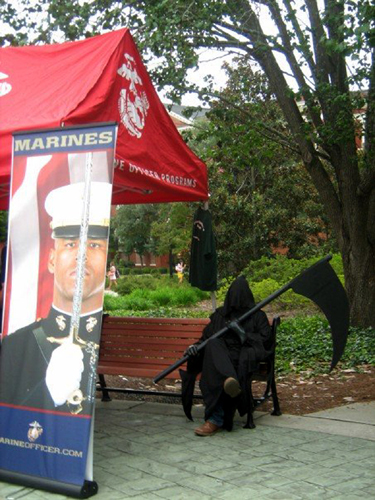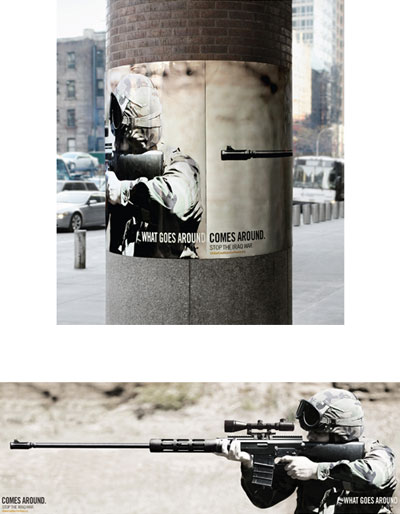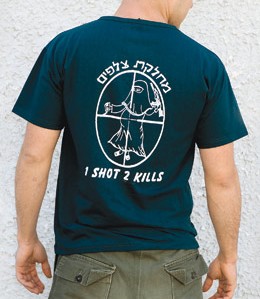war
 “In our attempt to bring this story [about the war in eastern Congo to access gold deposits] to the attention of these international gold traders, Human Rights Watch and I worked together to create an exhibit of my mining photographs in Geneva, Switzerland, where Metalor Technologies, one of the leading gold mining companies, has its corporate offices. We invited to the exhibit’s opening night gold buyers and mining company executives as well as financiers, stockholders and journalists. Immediately after seeing this exhibit, Metalor Technologies halted its purchases of Congolese gold.…
“In our attempt to bring this story [about the war in eastern Congo to access gold deposits] to the attention of these international gold traders, Human Rights Watch and I worked together to create an exhibit of my mining photographs in Geneva, Switzerland, where Metalor Technologies, one of the leading gold mining companies, has its corporate offices. We invited to the exhibit’s opening night gold buyers and mining company executives as well as financiers, stockholders and journalists. Immediately after seeing this exhibit, Metalor Technologies halted its purchases of Congolese gold.…At about the time I was teaching these young students, I was collaborating with a comic artist, Paul O’Connell, on an article for Ctrl.Alt.Shift. Our partnership revolved around the idea of us combining our various skills to create new ways of delivering messages. What this meant is that Paul took my photographs from places like the Congo and transformed them into a comic strip to tell the story to a different audience.” (via)
Bricks and Mortars

While the conflict in Israel and Palestine is a war for dominance, territory, hearts and minds, it is also a war on, and of, the built environment: bulldozing and bombing homes, laying and rerouting roads, checkpoints, the separation wall, and, of course, the settlements.
After the Israeli assault on Gaza that began in December 2008, the Israeli army banned the import of cement. This is particularly pressing since homes, hospitals, schools, water networks cannot be rebuilt.
While some are designing around the ban, developing mud brick architecture and off-grid lighting systems, other activists have flouted the ban sending Gaza cement themselves. And though Israel eased a total ban on construction materials in late July, only 41 truckloads of construction materials were allowed to enter Gaza in 2009. Thousands more are needed.
Last week, on the anniversary of the assault, a group of sixteen human rights and humanitarian organizations accused the international community of betraying the people of Gaza by failing to end the Israeli blockade. Meanwhile, the Western media has not only ignored demonstrations within Israel and without, but even softened the impact of the blockade.
Update 1/6/10: Al Jazeera has another angle on design, the blockade, and the built environment: a write-up of graffiti culture in Gaza. Without access to uncensored news, some activists have turned to graffiti — and were even occasionally sponsored, supplied, and trained by Hamas or Fatah. (via)
Semper Fi
I thought this anti-recruiting action at Georgia College and State University was to the point. Thanks to graphic artist Bill Fisher for the documentation.
One Thousand Paper Cranes
 Sadako Sasaki was two years old when she survived the atomic bomb dropped on Hiroshima on August 6. 1945. Ten years later, she became gravely ill and was hospitalized with leukemia. She began folding paper cranes in hope of making a thousand, which according to Japanese legend would allow her to be granted one wish — to live. However, when she realized she would not survive, she wished instead for world peace and an end to suffering.
Sadako Sasaki was two years old when she survived the atomic bomb dropped on Hiroshima on August 6. 1945. Ten years later, she became gravely ill and was hospitalized with leukemia. She began folding paper cranes in hope of making a thousand, which according to Japanese legend would allow her to be granted one wish — to live. However, when she realized she would not survive, she wished instead for world peace and an end to suffering.
She folded 644 cranes before she became too weak to fold any more, and died shortly after. Sadako’s story has been popularized in books, movies, and music, including a widely translated children’s book in 1965 by an Austrian author and the American children’s book Sadako and the Thousand Paper Cranes published in 1977.
The origami paper crane has since become a symbol of world peace. Paper cranes and lanterns are floated each year to remember those who died from the bombs and to call for peace and disarmament.
What Goes Around
Clever series of cylindrical ads designed by Big Ant International for the Global Coalition for Peace. (via, via)
The Audacity of Hope
“Suicide bombings in Iraq since 2003 have killed thousands of people, mostly Iraqi civilians, and arguably constitute a new phenomenon in the history of warfare. Suicide bombings have been used as a tactic in other armed struggles, but their frequency and lethality in Iraq is unprecedented.” [source]
“The US military is grappling with a record number of soldier suicides. At least thirteen soldiers took their lives last month.… As many as 143 soldiers reportedly took their own lives last year.” [source]
“The true incidence of suicide among veterans is not known, according to a recent Congressional Research Service report. Based on numbers from the Centers for Disease Control and Prevention, the VA estimates that 18 veterans a day — or 6,500 a year — take their own lives, but that number includes vets from all wars.” [source]
Worn on its Sleeve
The chattering classes are aflutter that the President of Iran yesterday called Israel “a cruel and repressive racist regime” at the UN Conference on Racism. 23 diplomats stormed out, others applauded. While Ahmadinejad has said some pretty outrageous things, in this case I wonder if he saw this latest item in the Israeli daily Haaretz about T-shirt designs Israeli soldiers are ordering for their IDF units. The shirts boast slogans and images of dead Palestinian babies, bombed mosques, jokes about rape, sniping children, killing pregnant women in Hijab, etc. The designs are revealing. This is clearly not a military culture solely preoccupied with defending the integrity of the State.





